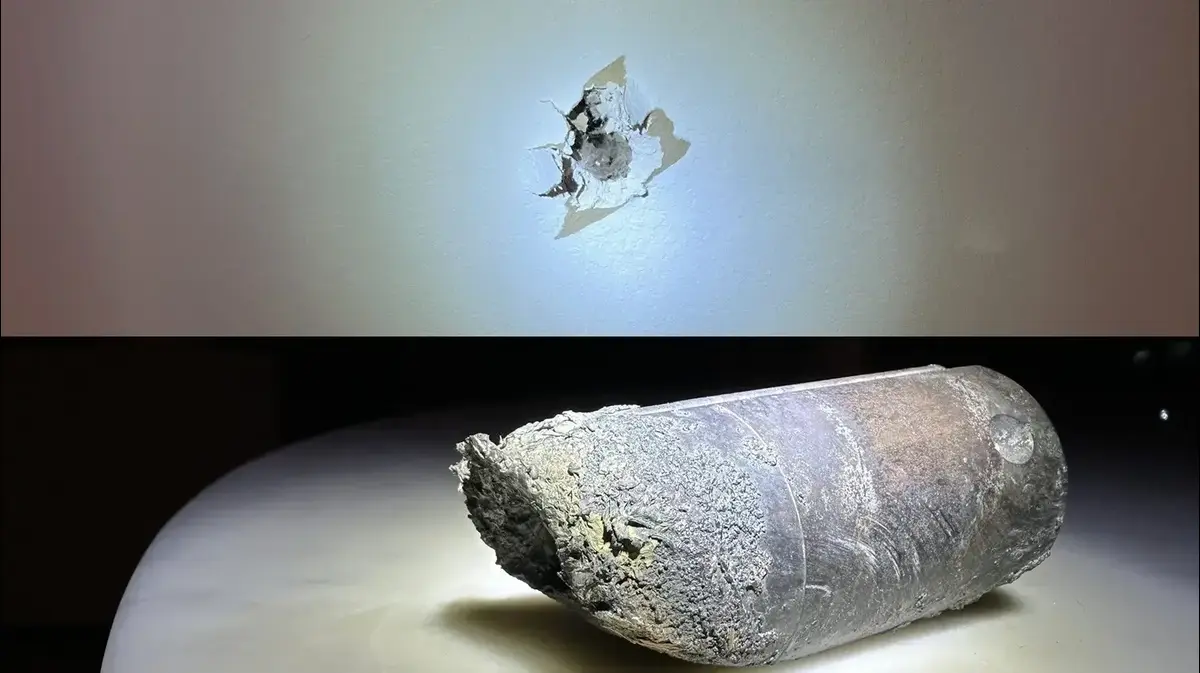"
A flying saucer from outer space crashed in the Utah desert after being tracked by radar and chased by helicopters," states the description of the photo, published in November 2018, although NASA does not hint at an extraterrestrial visitation.
The beaten plate, half buried in the desert sand, was actually the return capsule of the Genesis spacecraft. And it wasn't supposed to land in such a brutal way, Science Alert reports.
Launched on August 8, 2001, the Genesis mission was the space agency's ambitious effort to send a spacecraft into our star's solar wind, collect samples, and bring them back to Earth.
By collecting data on the composition of charged particles flowing from the Sun's corona, the researchers hoped to accurately determine the star's composition and learn more about the elements that were around when the Solar System's planets formed.
"A flying saucer from outer space crashed in the Utah desert after being tracked by radar and chased by helicopters," NASA wrote.
To bring us solar wind samples, the Genesis spacecraft was equipped with a sample return capsule containing a box of solar wind materials, collected when the spacecraft spent two years orbiting Lagrange point 1, one of the points in space where the gravity of Earth and the Sun are precisely balanced.
The spacecraft captured the solar wind by deploying a series of collecting arrays, each loaded with high-purity materials such as aluminum, sapphire, silicon and even gold.
The strange flying saucer
On September 8, 2004, that sample capsule and its precious assemblies crashed to the ground in Utah, at an estimated speed of 310 km/h.
What was supposed to happen was quite different: 127 seconds after re-entering the atmosphere, a mortar aboard the capsule would explode, releasing a preliminary parachute to slow and stabilize the descent.
A main parachute was then inflated, providing the capsule with a gentle descent into the Utah Test and Training Range.
In the photo of the accident you can see helicopters: they were nearby, ready to hook the capsule into the air and transport it directly to a clean room to avoid contamination of the samples.
None of those parachutes deployed.
The Genesis spacecraft in a NASA design.
After extensive investigation, the error can be traced back to a set of sensors, barely the size of the metal end of a pencil. They had settled upside down.
These tiny devices were supposed to detect increased g-forces as the capsule plummeted toward the ground and trigger the deployment of the parachutes.
As you can imagine, the accident caused severe damage, breaking several of the dies and contaminating the precious cargo it contained.
Fortunately, the Genesis mission was not completely ruined, even after such a dramatic arrival of the sample capsule. Some of the resistant collecting materials survived and the researchers managed to clean the surfaces without altering the solar material embedded within.
Some of the resistant materials survived and the researchers managed to clean the surfaces without altering the solar material embedded inside (NASA).
Within three years, a series of papers on the Genesis findings was published. Thanks to the daring mission, we learned unprecedented details about the composition of the Sun and the elementary differences between our star and the inner planets of the Solar System.
"The Sun hosts more than 99 percent of the material currently found in our Solar System, so it's a good idea to know it better," Genesis principal investigator Don Burnett of the California Institute of Technology said in 2011.
"While it was more challenging than expected, we have answered some important questions and, like all successful missions, generated many more."
See also
Berritxu, the parrot that speaks Basque and sweeps the networks
See also
They took a picture of the sun where an incredible object is hidden.
See also
The amazing two-story RV with elevator and solarium
GML







